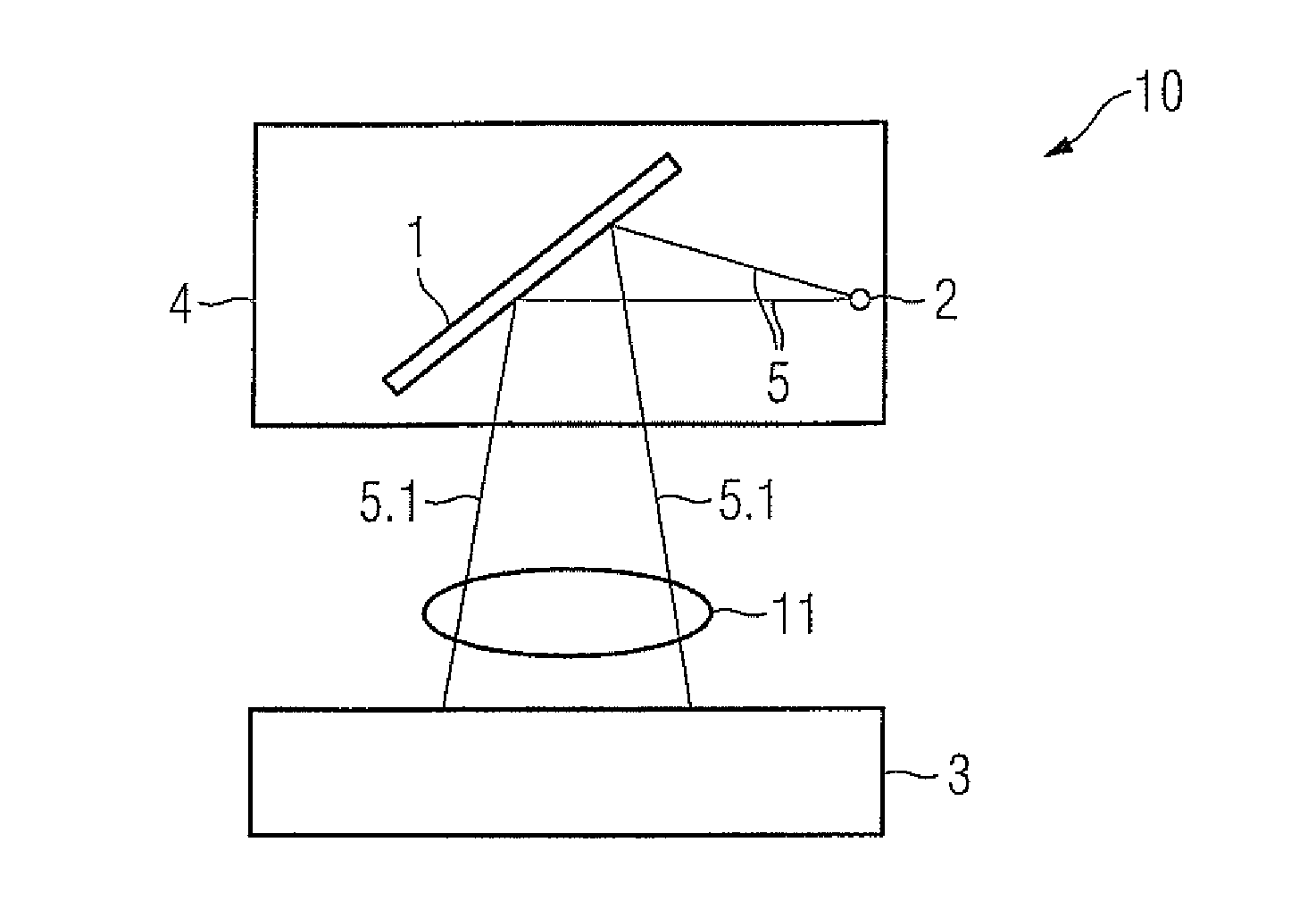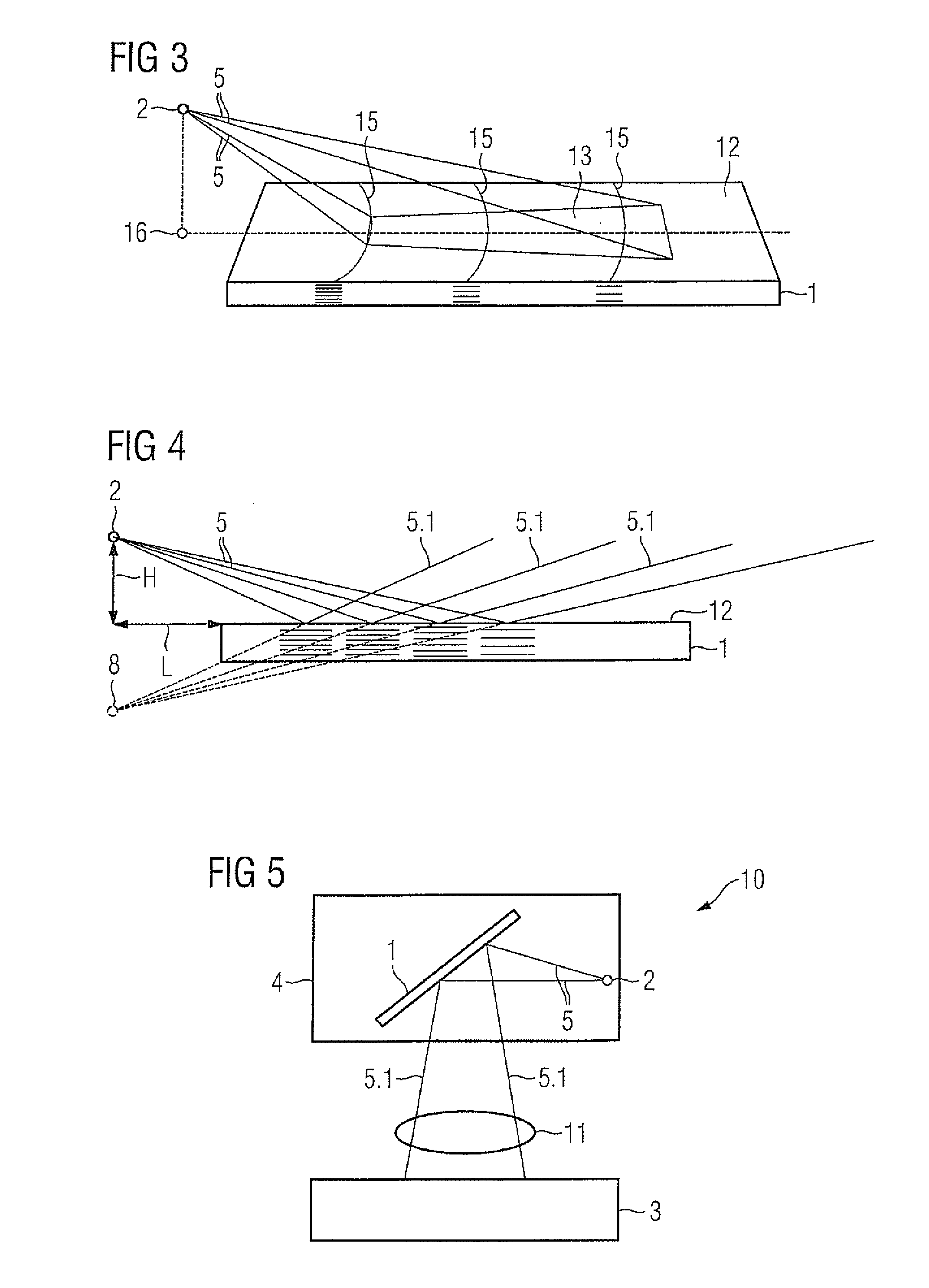X-ray radiator to generate quasi-monochromatic x-ray radiation, and radiography x-ray acquisition system employing same
a radiography x-ray acquisition system and quasi-monochromatic technology, applied in applications, instruments, nuclear engineering, etc., can solve the problems of significant efficiency loss due to polychromatic braking spectrum, insignificant monochromatic x-ray radiation, and increase efficiency, so as to achieve optimally large exposure area and high radiation intensity
- Summary
- Abstract
- Description
- Claims
- Application Information
AI Technical Summary
Benefits of technology
Problems solved by technology
Method used
Image
Examples
Embodiment Construction
[0032]FIG. 1 shows an x-ray braking spectrum of a conventional, polychromatic x-ray source according to the prior art, wherein the solid line shows an unfiltered x-ray spectrum and the dashed line and dash-dot line show an x-ray spectrum filtered with a copper filter. All x-ray spectra are generated with comparable tube voltage of the x-ray source of approximately 100 kV. The dash-dot x-ray spectrum was generated with a stronger filtering than the dashed curve. Low-energy portions of the x-ray spectrum are masked out via the use of a filter; however, the intensity is also severely reduced. Given the generation of a quasi-monochromatic x-ray radiation—thus an x-ray radiation whose quantum energy is limited to an energy band of essentially 15 keV or less—so little intensity remains that an imaging with full image acquisition is still possible only for very thin objects. The highest energy of the x-ray spectrum is determined by the tube voltage.
[0033]The Bragg reflection of x-ray radia...
PUM
 Login to View More
Login to View More Abstract
Description
Claims
Application Information
 Login to View More
Login to View More - R&D
- Intellectual Property
- Life Sciences
- Materials
- Tech Scout
- Unparalleled Data Quality
- Higher Quality Content
- 60% Fewer Hallucinations
Browse by: Latest US Patents, China's latest patents, Technical Efficacy Thesaurus, Application Domain, Technology Topic, Popular Technical Reports.
© 2025 PatSnap. All rights reserved.Legal|Privacy policy|Modern Slavery Act Transparency Statement|Sitemap|About US| Contact US: help@patsnap.com



